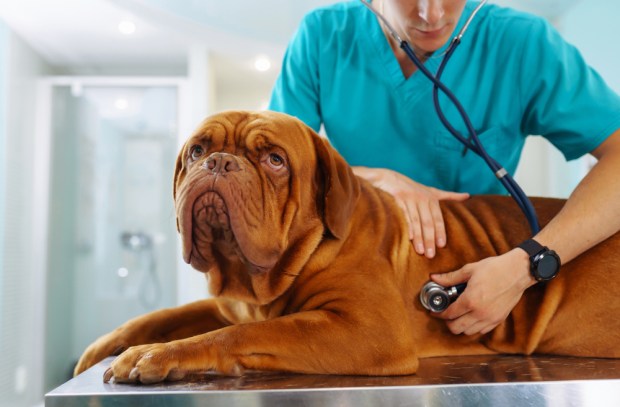CareCredit Says Pets Deserve All Essentials, Not Just Kibble and Toys

Pet parenthood is nothing like adopting a virtual pet like a GigaPet. To pet parents, the reference might even be insulting.
In fact, 7 out of 10 pet parents view their pets as family members or even as children. Given this emotional bond, it makes sense to treat them with the same care and consideration when it comes to their healthcare needs.
According to a survey by the American Pet Products Association, nearly 70% of households in the U.S. own a pet. It is estimated that one in three will require emergency veterinary treatment every year — making the case that while kibble and toys are essential, so is adequate healthcare.
While pet parents may strive to provide everything their pets need from a healthcare perspective, the abundance of information can be overwhelming, and a common misconception exists that obtaining healthcare and payment solutions for pets is financially unattainable.
However, with new pet parents — a segment that has surged since the pandemic, with 1 in 5 households adopting a pet during that time, it has become crucial for them to learn the right information. This is important for their wallets and, more importantly, for their pets’ overall health and well-being.
In an interview with PYMNTS, Jonathan Wainberg, senior vice president and general manager at CareCredit, a Synchrony product, delves into vital information that pet parents should be mindful of, as well as the impact these insights can have on not just their pets’ overall health and their financial situation.
Comparing human and pet healthcare, he asked, “Can you imagine as a human finding out you had a heart attack, and being told you could get the double bypass, but it would cost more, so instead, you could get the single bypass surgery?” The question underscored the distinctions between the two fields, the contrasting terminology used in the veterinary domain, and the dominant role costs play in the conversation.
The Difference Between Human and Pet Healthcare Visits
Unlike in human healthcare, when pet owners visit a veterinarian, after running the appropriate tests and assessments, they are immediately presented with possible treatment courses and the costs associated with each. While costs remain a concern in human healthcare, they are not often openly discussed by the doctor during patient conversations.
Despite the potentially disconcerting nature of the situation, this conversation is unavoidable. Therefore, Wainberg and his team have proactively endeavored to establish environments where pet parents can collaborate with veterinarians to ensure their pets’ best possible outcome without financial concerns.
CareCredit is available in about 80% of veterinary clinics nationwide.
Cost of Having a Pet
In 2022, CareCredit disclosed that pet owners could anticipate care expenses ranging from $20,000 to $55,000 for dogs and $15,000 to $45,000 for cats throughout their pets’ lifetimes. The payments solution provider also revealed that about 30 million U.S. households had faced unexpected pet expenses, leading to financial worry.
But Wainberg noted: “An unexpected (emergency) pet expense of $500 would cause incredible duress for over 50% of pet owners.”
With that in mind, Wainberg said that when a customer becomes a CareCredit user for the first time, they typically spend approximately $1,100.
CareCredit Returning Customers
But while the first-time use may be high, Wainberg said that the returning customers return at a lower price point, to approximately a third of what they initially spent but tend to use CareCredit throughout the year for multiple pet-related expenses.
Like humans, pets deserve all of the essentials, including insurance.
Even during inflation, pet parents aren’t skimping on their fur babies.
In May, PYMNTS reported that while many were turning to lower-quality goods to save on costs, only a few were willing to subject their pets to the same treatment.
Read more: Grocery Shoppers Don’t Scrimp When Buying Food for Their Pets
The trend continued in July with another PYMNTS report stating that, despite subscription rates declining, the pet supply subscription segment experienced robust growth due to its comprehensive offerings. Additionally, the emotional attachment people have to their pets contributed to strengthening the segment’s margins, as pet subscriptions were deemed essential in their households.
Read also: Consumers Consider Pet Supply Subscriptions as Essential as Household Items
As devoted pet parents seek to cater to their pets’ needs, Wainberg emphasized the company’s ongoing mission to acquaint pet parents with the CareCredit payment solution. However, Synchrony also aims to introduce another less commonly discussed option — pet insurance.
To address this issue, Wainberg’s team acquired Pets Best, a pet insurance company, approximately four years ago. They have since collaborated with veterinarian partners to incorporate both CareCredit and pet insurance as part of their new puppy kits.
To encourage continued care of pets, Synchrony has worked to include new insurance package inclusions to support overall pet health and wellness. These tiers allow pet parents to prioritize regular checkups and preventive care.
Wainberg noted that approximately 40% to 50% of Pets Best’s insurance policies include the wellness option.
With that, having both CareCredit and Pets Best insurance, pet parents can handle any future health-related situation for their pets, be it an unexpected emergency or a routine checkup.
Being Financially Prepared During Emergencies
Emergencies are inevitable. But in case pet parents are not prepared, Wainberg said that CareCredit has made significant efforts to simplify the credit application process. The solutions provider has partnered with veterinarians to implement user-friendly options, such as QR codes and pre-qualification, which do not require a hard credit check.

